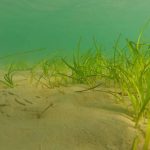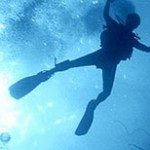
Citizen science has become something of a buzzword, but it’s nothing new. Before science became professionalised in the 19th century, amateur naturalists were collecting information and helping us understand the natural world. And it wasn’t just country vicars; Mary Anning, the daughter of a poor cabinet-maker, spent decades discovering fossils in the cliffs at Lyme Regis, in Dorset, and advancing human understanding of prehistoric life.
In the UK the RSPB has more than a million members, and a 2009 study found that nearly 50% of UK households feed wild birds. The National Trust has more than 5 million members, and 60,000 active volunteers helping to protect the countryside as well as historic properties. Now, with our environment arguably under greater threat than ever and species declining at an alarming rate, volunteers are once again at the forefront of efforts to limit the damage – as we saw on the BBC’s Winterwatch this week.
As a marine biologist I have been inspired by citizen scientists and volunteers, who give me hope for the future of conservation. On the Isle of Man, more than 8,000 people (nearly 10% of the population) are involved in regular weekend beach cleans, rallied by the dynamic Beach Buddies organiser Bill Dale. At one recent event, 123 volunteers turned up and removed 183 bags of litter in just a couple of hours. Thanks to initiatives such as this, the island shares Unesco biosphere reserve status with Archipélago de Colón, better known as the Galápagos, Yellowstone in the US, Uluru in Australia, and hundreds of other sites.
Recreational divers are making a real difference underwater too. They monitor the spread of invasive species, such as the Japanese seaweedswakame and wireweed, and record how native species respond. Divers also document levels of marine litter and discarded fishing gear and other human impacts. Training to become a volunteer survey diver with Seasearch, the volunteer dive arm of the Marine Conservation Society, can transform a diver’s experiences. Tony Glen, a Seasearch co-ordinator, summed this up: “Before I knew what I was looking at I would speed along and not really take it all in. Now I can hover over the same rock for 20 minutes and keep on finding new things to look at, from a rare sea anemone to a multicoloured nudibranchseaslug.”
Volunteer divers have played an important role in collecting information about marine conservation zones. In Norfolk they even discovered a submerged prehistoric forest. In the Isle of Man, divers were the first to discover a rich and diverse horse mussel reef just around the corner from the busy port of Douglas, and snorkellers found a lush eelgrass meadow close to the village of Port St Mary.
Volunteers have also made a vital contribution to the conservation of basking sharks. The work of a citizen science Basking Shark Project in the 1980s and 90s was instrumental in getting these sharks on the protected species list in the UK, while satellite tagging revealed the first recorded transatlantic crossing by a basking shark.
Volunteers and enthusiasts can be powerful drivers for big changes. The Community of Arran Seabed Trust campaigned for 13 years to protect the special marine habitats of Lamlash Bay, and their dedication led to the establishment of Scotland’s first no-take zone (the most highly protected kind of marine protected area) in 2008. As a group of divers and concerned residents who lived on the shores of the bay, they took their campaign on to national and international stages and continue to inspire people who might otherwise feel powerless when confronted by threats to the places that matter to them.
Of course we need publicly funded science. Volunteers can’t, and don’t, want to take the place of trained specialists. But we can be a unique partnership – marrying expertise with passion and local knowledge. No one can know better, or care more about, our most special places than the people who live in them and give up their free time to look after them.














Social Profiles